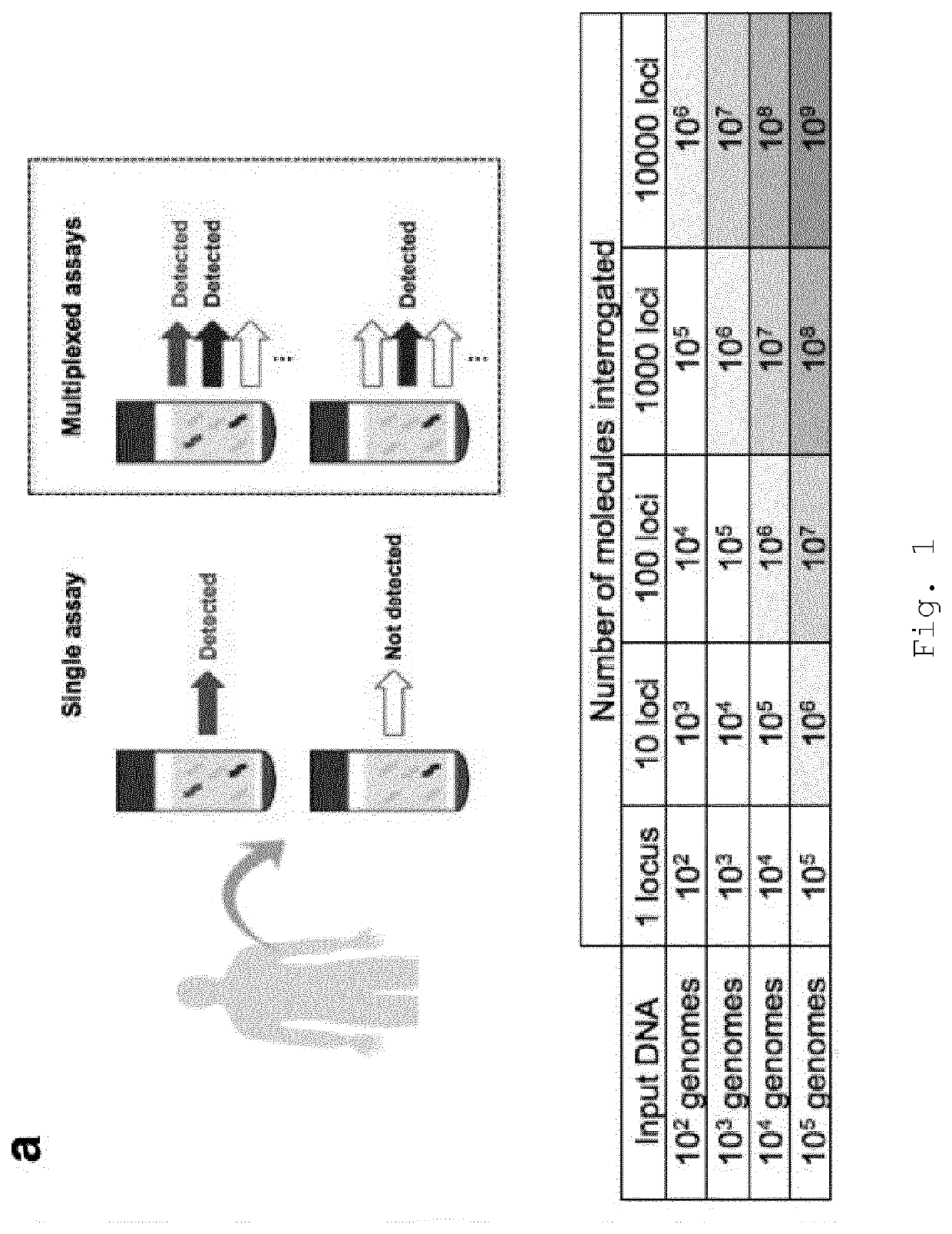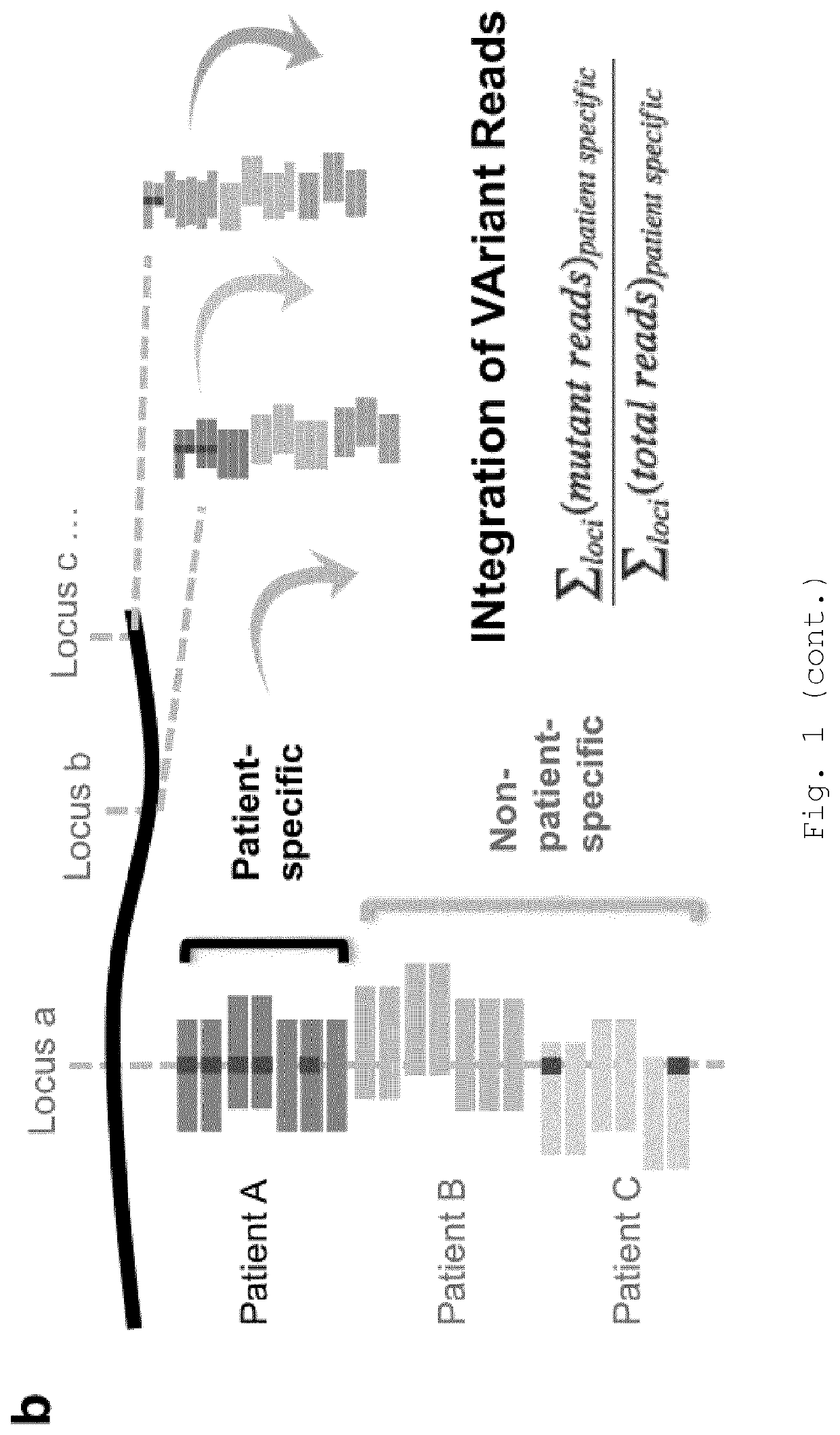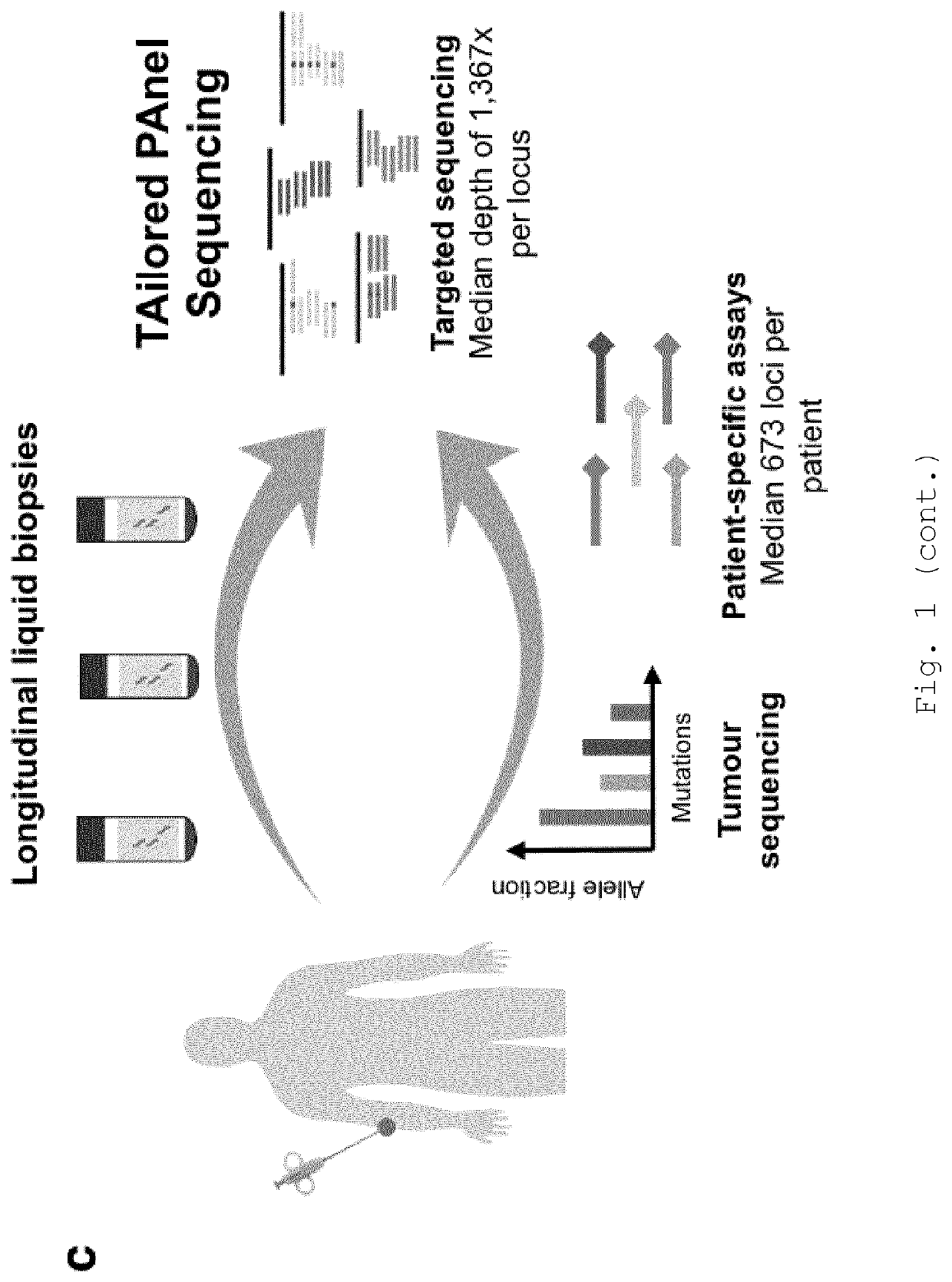Improvements in variant detection
- Summary
- Abstract
- Description
- Claims
- Application Information
AI Technical Summary
Benefits of technology
Problems solved by technology
Method used
Image
Examples
example 1
ation of Patient-Specific Mutations from Tumour and Plasma
[0253]To achieve high sequencing depth at defined loci that were mutated in the patients' tumours, a tailored hybrid-capture sequencing panel was designed based on single nucleotide variants (SNVs) identified in sequencing of tumour biopsies. SNVs with 1 mutant read and 10 total reads were selected from exome sequencing (9 patients) or targeted sequencing (1 patient) of a baseline metastatic biopsy. The median number of SNVs identified per patient was 673 (IQR 250-1,209; FIG. 7a). Patient-specific variants were determined (not shown). In addition, in order to allow de novo identification of mutations in plasma, coding sequences and untranslated regions of the following genes were included in the panel design: ARID2, BRAF, CDKN2A, NF1, PTEN and TP53, as well as hotspot loci in 37 additional genes commonly mutated in melanoma (not shown). The final panel design covered 1.527 Mbp.
[0254]The finalised bait set was applied to libra...
example 2
isation of Background Error Rates
[0256]We sought to learn the background error rates (i.e. the rate of observing a mutant base that was not expected) with and without error suppression in TAPAS sequencing data. Bases either side of patient-specific variants were studied as they would have a comparable sequencing depth to patient-specific variants, and would be subject to the same technical biases. In order to leverage this off-target sequencing of patient samples, germline events and potential biological signals were excluded if they occurred multiple times in samples from the same individual (Methods); these loci were set aside for subsequent de novo mutation calling.
[0257]Error suppression can be achieved by determining the consensus sequence across a read family using read collapsing. To achieve this, duplicate reads were grouped into ‘read families’ based on both start and end fragment positions, previously termed ‘endogenous barcodes’11,12, and molecular barcodes. Read families...
example 3
on of Variant Reads (INVAR)
[0258]Using a stringent level of error suppression (consensus required in 90% of family members, with a minimum family size of 5), with a median of 4.4 ng input, we obtained a median of 3.2×105 read families at each time point (IQR 8.7×104-6.2×105), each of which cover a locus that is mutated in that patient's cancer. Under the assumption that each such read family corresponds to a single molecule, we were thus able to probe for each sample hundreds of thousands of target molecules even though the starting material contained only ˜1300 copies of the genome.
[0259]When ctDNA levels are low, many patient-specific loci will have no mutant DNA fragments at that position (FIG. 7b). Therefore, to overcome sampling error, all patient-specific read-families were aggregated and analysed together using INVAR (FIG. 1b). For each sample, a ‘global’ mutant allele fraction was calculated across all patient-specific loci as follows:
∑loci(mutantreads)patientspecific∑loci(t...
PUM
| Property | Measurement | Unit |
|---|---|---|
| Fraction | aaaaa | aaaaa |
| Fraction | aaaaa | aaaaa |
| Fraction | aaaaa | aaaaa |
Abstract
Description
Claims
Application Information
 Login to View More
Login to View More - R&D
- Intellectual Property
- Life Sciences
- Materials
- Tech Scout
- Unparalleled Data Quality
- Higher Quality Content
- 60% Fewer Hallucinations
Browse by: Latest US Patents, China's latest patents, Technical Efficacy Thesaurus, Application Domain, Technology Topic, Popular Technical Reports.
© 2025 PatSnap. All rights reserved.Legal|Privacy policy|Modern Slavery Act Transparency Statement|Sitemap|About US| Contact US: help@patsnap.com



